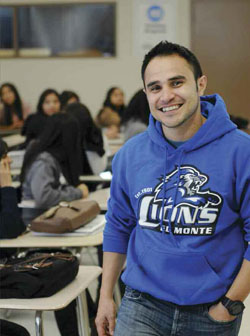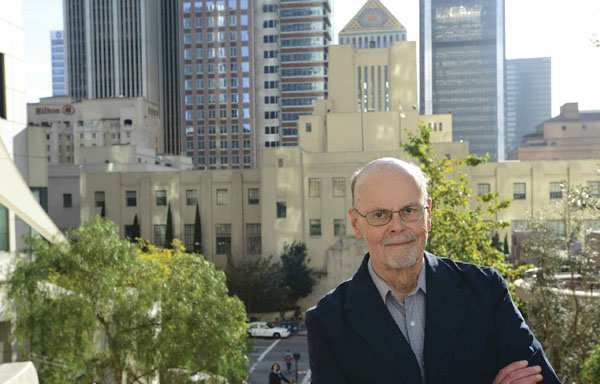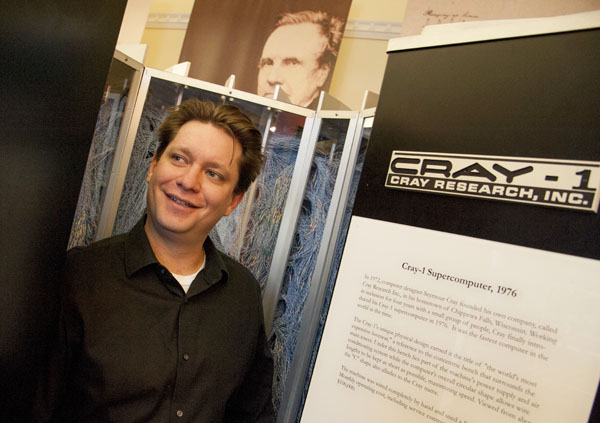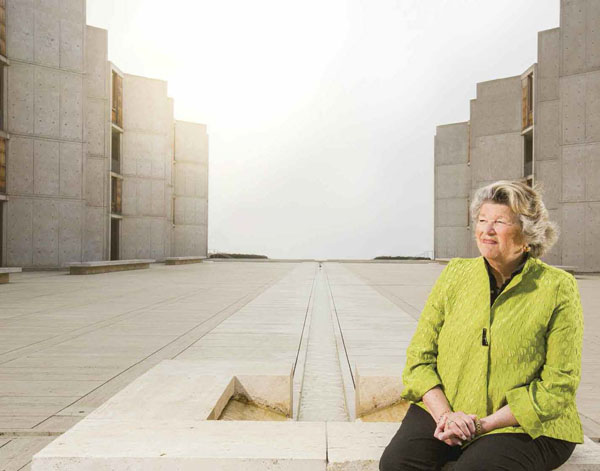

Children are always asked what they want to be when they grow up. As far back as he can remember, Juan Jose Guerra ’85 always had the same answer. He wanted to be a doctor. But unlike other boys who grow out of fantasies of being firemen or Air Force pilots, Guerra never let go of his goal. He forged ahead despite his immigrant background, his parents’ modest means, his lackluster test scores and the skeptical advisors who doubted he had the mettle for medicine. He persisted even after “crash-landing” through freshman chemistry at Pomona College and getting a D+ in biology, forcing him to switch majors from pre-med to economics.
You might say Guerra made an end-run around what he considers the brutal “weed-out system” of traditional pre-med. He took encouragement from professors outside of the sciences. He took summer courses at Georgetown to complete pre-med requirements. And he took time for a year of post-baccalaureate work at UC Irvine to help him boost his score on the MCAT, the medical school entrance exam, which he fumbled the first time around.
After all that, he was put on waiting lists for medical schools in California. In an admissions interview, one dean asked why he wanted to be a doctor, but arrogantly rejected the answer when Guerra said it was to serve his community. Finally, he found a spot in the urban health program at the University of Illinois College of Medicine, in Champaign-Urbana, which had fostered diversity in the field since the early ’70s, when Guerra was still a boy translating for his Salvadoran grandparents at their doctor’s visits.
By the time he graduated in 1993 with that hard-fought diploma in hand, it was like scoring a last-minute touchdown for the underdog team at the Super Bowl. “I think if it were an end-zone celebration, the referees would have thrown flags,” jokes Guerra, whose other outsized dream was to be a basketball player, despite his soccer-size stature. “For me, the future was just so vivid as a physician. That’s all I could see myself doing.”
Yet, even after all these years, he wonders why so many minority students in similar circumstances still don’t go the distance. “I don’t have an answer,” says Guerra. “Each person has a different reason for why they let go of their dreams. The journey to become a physician—to become anything—is different for many people. I was weeded out after getting that D+. I was told that was the end of the story. But in reality, it was just the beginning.”
Guerra didn’t really do an end-zone dance at his graduation. He seems too reserved for that. The young doctor simply went to dinner with his parents, then packed his bags and headed back to California to start his residency at Kaiser Permanente’s flagship hospital in Oakland, a city with a high population of Latinos. Guerra still works there today, leading an experimental program that he helped create to address the health care needs of Spanish-speaking patients. Named Salud en Español (Health In Spanish), the small clinic features an interdisciplinary approach to treatment, housing a team of 14 doctors, including family practioners as well as specialists in internal medicine, pediatrics and obstetrics/gynecology, Guerra’s chosen field. He likes to call the clinic “a medical home for our Latino members.”
Guerra’s fourth-floor office is located in a gritty urban neighborhood near the intersection of two freeways. It overlooks the outdated hospital where he started his career, and which is now being replaced by a modern facility. But not just the buildings are changing. The profession itself is being revolutionized, with use of digital case files, the advent of “Obamacare” and the pressure on doctors to produce measurable outcomes. That simply means they must prove that their patients are getting better, which he argues is one of the biggest benefits of culturally competent care.
But as he walks past that old hospital building, with its dreary Soviet-like architecture, Guerra often reflects on the things that haven’t changed in his chosen occupation. Society is still struggling to produce more physicians from underrepresented minorities, especially Latinos and African-Americans. In that respect, medicine is much the same as it was when he started 20 years ago.
Today in California, fewer than five percent of doctors are Latino, though Latinos constitute a third of the state’s population and half of the children born here. That sends the crucial doctor-to-patient ratio completely out of whack, according to the Sacramento-based Latino Coalition for a Healthy California, a leading advocacy group aiming to improve Latino health care. To reach parity today, California would need to produce an additional 27,000 Latino physicians—instantly.
There are recent signs of progress. A 2012 report from the Association of American Medical Colleges shows that, nationwide, minority applicants to medical school increased for the third straight year. Last year, applications from Latino students hit an all-time high of 1,731, a six percent increase over 2011.
However, the Latino population is growing at an even faster rate. This year, they are on track to surpass whites as the state’s largest ethnic group. The pipeline through medical schools just can’t keep pace.
Guerra believes educators must address the problem with new ways of assessing candidates and measuring success. “Telling someone they can’t become a doctor based on a grade, I think, is a disservice,” he says. “Everyone learns differently.”
The doctor’s prescription is simple: Develop talent. Don’t just select it.
On his desk, Guerra keeps a framed photograph taken of him last year with a group of pre-med students at Pomona. It was his first trip back to his alma mater, and he found students hungry for guidance. They signed the picture: “Thanks for your encouragement!!”
Guerra, however, came away discouraged. “That was just a reminder of, es la misma cosa—still the same old thing,” he says. “It was like meeting myself all over again, meeting students who were struggling to pursue their dream of becoming a physician, and maybe they had gotten a C+ and were feeling that pressure.”
Professor Roberto Garza-Lopez, a Mexican immigrant who now chairs the Chemistry Department, believes things have improved at Pomona since Guerra’s day. He cites several programs designed to help Latino students—mentoring, tutoring, peer support—that didn’t exist when he began teaching there 22 years ago. And today, the College has more people of color on the faculty to serve as role models, says Garza, who in 2007 became the first Mexican citizen to be named full professor in the sciences at Pomona.
Mentoring is key. Establishing a one-to-one personal relationship with students can make the difference between success and failure. Students in crisis, whether personal or academic, must feel they have a lifeline, says Garza, who encourages students to email or call him any time, even on weekends. They can also come to his lab at night for counseling, or just a pep talk.
“So the door is always open for them to encounter a professor who is willing to help them,” says Garza, who comes from a family of physicians in Mexico. “It’s this type of relationship with students where the trust is established, then the growth process starts.”
All these efforts try to head off the sense of isolation Dr. Guerra felt when he first arrived on campus. The High Achievement Program (HAP), for example, works with entering freshmen during the summer before they start at Pomona. They do coursework and research that gets them primed for college-level work; plus, they establish mentoring relationships that carry forward through that key first year, so they don’t fall through the cracks. In addition, they establish peer connections with students in the other Claremont Colleges through workshops sponsored by the Office of Chicano/Latino Student Affairs.
“That is very helpful because when they enter Pomona College they belong to a group,” says Garza. “So if they experience problems, they know where to go and whom to talk to, and they have this network of people who are trying to help them. Twenty years ago, we didn’t have that. Believe me, now they do not feel isolated.”
 Professor Garza proudly points to several of his own success stories. One of them is Dr. Gerardo Lopez-Mena ’04 (pictured), the son of Mexican immigrants, born and raised in the blue-collar community of El Monte. Lopez-Mena—who uses his dual surname from his father, a custodian, and his mother, a homemaker—got a generous college scholarship and graduated with a degree in chemistry. But he couldn’t have made it without mentors, he says, including Prof. Garza who encouraged him to do research and made him co-author of a serious scientific paper published in the journal Chemical Physics Letters.
Professor Garza proudly points to several of his own success stories. One of them is Dr. Gerardo Lopez-Mena ’04 (pictured), the son of Mexican immigrants, born and raised in the blue-collar community of El Monte. Lopez-Mena—who uses his dual surname from his father, a custodian, and his mother, a homemaker—got a generous college scholarship and graduated with a degree in chemistry. But he couldn’t have made it without mentors, he says, including Prof. Garza who encouraged him to do research and made him co-author of a serious scientific paper published in the journal Chemical Physics Letters.
“Unfortunately, many of us go to medical school and don’t have the privilege of having had doctors at our dinner tables who make us feel that we belong,” say Lopez-Mena, who this year is completing his residency in internal medicine at The Johns Hopkins Bayview Medical Center in Baltimore. “But I’ve been blessed to have mentors throughout my life. So when there was someone telling me no, I had more people telling me yes. I had mentors who saw something in me even at times when I didn’t see it in myself.”
Guerra was 4 when his parents brought him to this country in the mid-’60s from his native El Salvador. His family settled in mid-town Los Angeles, just west of the Pico-Union neighborhood that would later explode as a dense nucleus of Central American immigration. Within two years, his maternal grandparents came to live with them.
Their arrival would change the course of his life. By the time he was 8, little Juan was recruited to accompany his abuelitos to their medical appointments, going by bus to nearby barrio clinics. His job: to serve as translator because they didn’t speak English.
That was a heavy and scary burden for a little boy. He worried about interpreting the medical information correctly. “It was nerve-racking,” he recalls. “My grandmother’s health was in my hands. What if I get it wrong?”
Communication was not the only challenge. Juan found it excruciating to have to witness the intimacy and probing of a doctor’s examination. He had to be there when his grandmother changed into her gown or when his grandfather had a rectal exam.
“Come on!” he says, with exasperation still in his voice. “How do you process that as a kid? Being in adult situations at that age was an eye-opener. It was just my reality, and the elements of justice resonated.”
Or rather, injustice. In those days, finding a Spanish-speaking doctor in the City of Angels was close to a miracle. Once, a doctor addressed his grandmother’s high blood pressure by telling the boy that “she’s got to stop eating so much Mexican food.” “But we’re not Mexican,” Juan responded. Maybe, Guerra says, the doctor should have just asked what kind of food his grandmother was eating. After all, she lived to be 95.
One mild day in December, Guerra is sporting a guayabera at work. Though the traditional tropical shirt is casual, his demeanor is formal, like his table manners at lunch. During an interview, he occasionally answers questions like he’s taking a test. Is wearing the guayabera a conscious choice?
“Correct.” Does he wear it to send a cultural message, to connect with patients, or just because he likes the style?
“All of the above.”
Many Latinos, Guerra says, cling to superstitious myths about health. For culturally competent doctors, the goal is to dispel those cultural mitos without condescension or condemnation.
Some patients, for example, think insulin actually causes the death of diabetics, because they see people forced to take it at the end stages of the disease. Guerra was still in junior high school when his own grandfather died of the disease, plus complications from alcoholism, another public health scourge among Latinos. Sharing that family story can help form a bond with his patients.
It’s all about establishing relationships of trust.
“The role of culturally sensitive care is very dynamic,” he says. “It requires agility and cultural humility, because not every Latino is going to be the same. But I point to the importance of family and being able to distribute messages of health, of empowerment, of encouragement. How those messages are perceived depends on who the messenger is.”
Lopez-Mena shares that vision. His desire to be a doctor also goes back to his childhood. He was born prematurely and suffered severe asthma growing up, so doctors were his role models of success. But he also had doubts and detours. He took the MCAT three times with less than stellar results, leading counselors to steer him to other careers. After college, he used his chemistry degree to work for a pharmaceutical company, which he didn’t like. Then for a couple of years he was a PE teacher in elementary school, which he loved.
In the end, he realized medicine was his vocation. After a year of post-baccalaureate study, he was accepted at the Albert Einstein College of Medicine in New York. “Nowadays,” says Lopez-Mena, “the main reason I want to be a doctor, and the main reason why I love my job, is that I want to be an advocate for people who don’t have a voice and really transform the Latino community into a healthier one.”
Guerra had originally planned to be a family doctor, but he changed his mind in medical school. During his clinical rotations in Peoria, where there was an influx of migrant farmworkers, he saw women who came to the hospital to deliver their babies. And he was struck by how traumatic it was for them because they couldn’t speak English. At the time, there were no Latino doctors in the training hospital’s ob-gyn department.
“To see the look of fear and despair because they felt out of place during what should be the happiest day of their lives was really powerful to me,” he recalls. “For a young medical student to be empowered to make a difference during a woman’s labor by being able to speak the language was just amazing. When you think of how I was able to calm and soothe patients who were otherwise in a scared state of mind, alone and worried. I think it was almost as effective as a good epidural.”
It reinforced his own reason for choosing medicine. That motivation remains as solid as it was during that humiliating admissions interview. When the medical school dean asked why he chose medicine, Guerra explained passionately about his childhood experiences with his grandparents and his desire “to bridge the gap between quality health care and individuals of diverse cultural backgrounds.” The reason was rejected. The increasingly impatient dean asked him three times, waiting for the “right” answer. But the increasingly defiant Guerra gave the same response each time.
Wrong, scolded the dean finally. He should want to be a doctor for the sake of science.
“I knew deep in my heart that the reason for my becoming a doctor was not going to be the fact that I love science,” says Guerra. “It was more because I love my family, and I reflected on the challenges that they had in obtaining quality health care. I came into medicine because I wanted to leave it in a better state.”


 THOUGH CORNELL GRADUATED a century ago, his plantings remain a conspicuous presence, and the late landscaping genius is still central to the story of Pomona’s intriguing mix of trees. Cornell was fascinated with foliage from his first semester at Pomona, when he took a botany course with charismatic Biology Professor Charles Fuller Baker. Soon, Cornell had a business venture selling saplings grown from Mexican avocado seeds, and the profits enabled him to go on to Harvard and earn his master’s in landscape architecture. Cornell found his way back to Southern California, and Pomona quickly hired him as the campus’ landscape architect, a role he would hold for four decades.
THOUGH CORNELL GRADUATED a century ago, his plantings remain a conspicuous presence, and the late landscaping genius is still central to the story of Pomona’s intriguing mix of trees. Cornell was fascinated with foliage from his first semester at Pomona, when he took a botany course with charismatic Biology Professor Charles Fuller Baker. Soon, Cornell had a business venture selling saplings grown from Mexican avocado seeds, and the profits enabled him to go on to Harvard and earn his master’s in landscape architecture. Cornell found his way back to Southern California, and Pomona quickly hired him as the campus’ landscape architect, a role he would hold for four decades.



 Home to the largest seabird colony in the continental U.S., the Farallones are a magnet for ocean wildlife. In summer, seemingly every inch of the place is claimed by thousands of nesting birds fiercely guarding their chicks. During the winter, noisy elephant seals crowd the beaches to give birth to their pups. Meanwhile, great white sharks hunt in the waters offshore. In other months, blue and humpback whales can be spotted making their annual migrations along the coast. Karnovsky made her first trip to the islands when she was just out of college, to work on a project to record shark sightings.
Home to the largest seabird colony in the continental U.S., the Farallones are a magnet for ocean wildlife. In summer, seemingly every inch of the place is claimed by thousands of nesting birds fiercely guarding their chicks. During the winter, noisy elephant seals crowd the beaches to give birth to their pups. Meanwhile, great white sharks hunt in the waters offshore. In other months, blue and humpback whales can be spotted making their annual migrations along the coast. Karnovsky made her first trip to the islands when she was just out of college, to work on a project to record shark sightings.
 They head down Fish Creek Wash, a dry riverbed winding its way through dramatically deep stone canyons.
They head down Fish Creek Wash, a dry riverbed winding its way through dramatically deep stone canyons. She also is drawn by the juxtaposition. Egrets, ducks and other birds wing above as unseen creatures rustle in the dry grass, a bucolic backdrop to the homeless people sleeping in tents deep in the brush, and the distant rush of commuters barreling down unseen roadways. The air carries a tinge of burning garbage as well, from breakfast campfires near the covered-over Tequesquite Landfill that Williams walked past to get here.
She also is drawn by the juxtaposition. Egrets, ducks and other birds wing above as unseen creatures rustle in the dry grass, a bucolic backdrop to the homeless people sleeping in tents deep in the brush, and the distant rush of commuters barreling down unseen roadways. The air carries a tinge of burning garbage as well, from breakfast campfires near the covered-over Tequesquite Landfill that Williams walked past to get here.